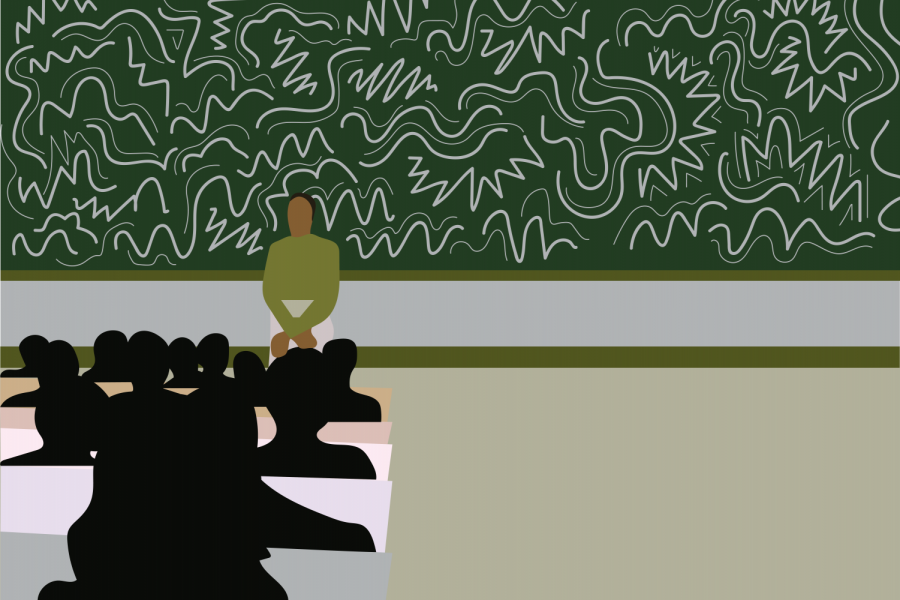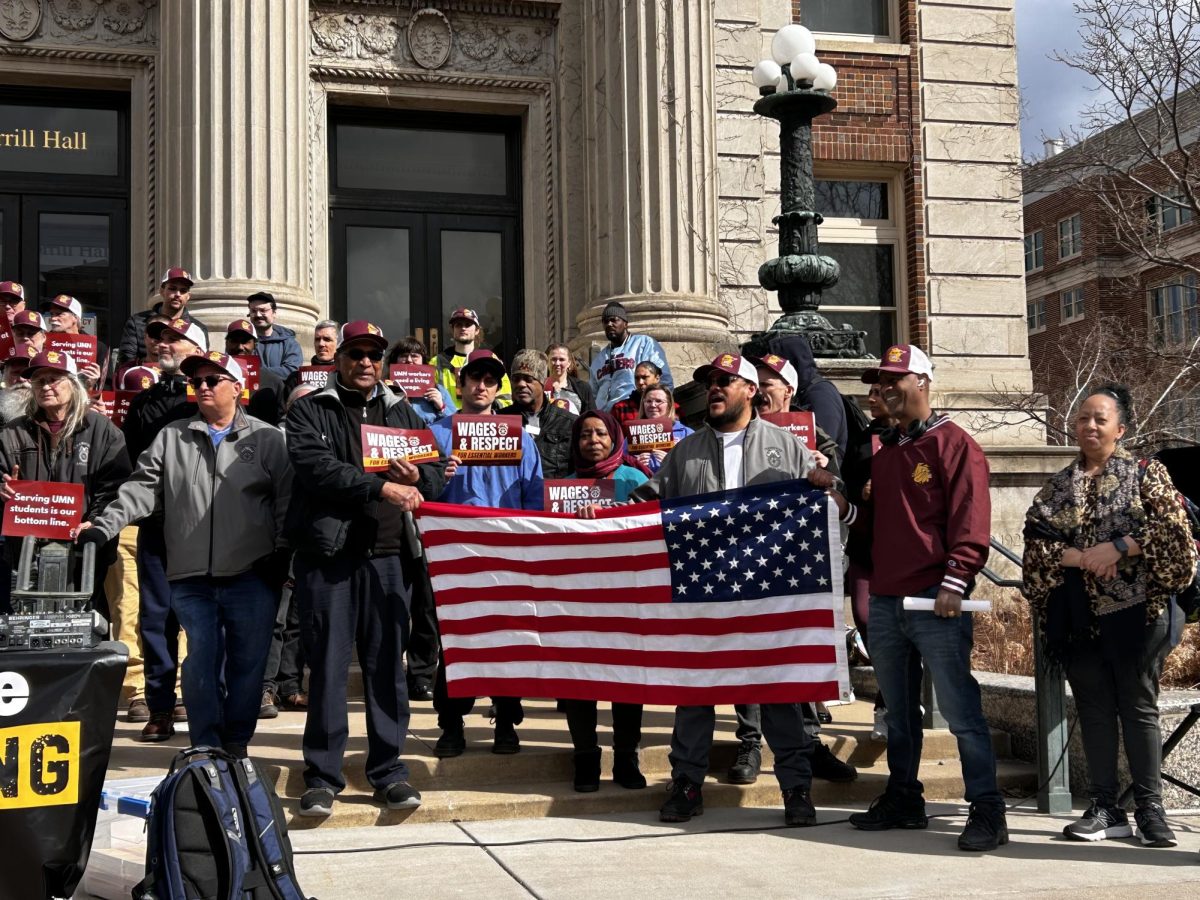A new University of Minnesota course offered this semester will instruct students in the practice of Indigenous mapping as a means of exploring the University’s relationship to systemic racism and settler colonialism.
“Thinking of a map in a history textbook,” Nora Livesay said, “what you don’t see is the map from the perspective of Indigenous people.” Livesay is teaching the new course.
Students will work in small groups to create “story maps” that graphically illustrate data relating to Indigenous communities.
“A lot of times when you’re watching the news of a presidential election, [they] will have maps in the background of the anchors, and they’ll show states turning different colors,” Livesay said.
Those maps in the background are an example of a story map, and the students in her class will use similar mapping technologies to represent the experiences of Indigenous communities.
“I think that there’s a lot of potential here for Indigenous people to have a voice and to tell stories … What are the stories of Indigenous people in relationship to the University of Minnesota?” Livesay said.
Indigenous mapping as a tool to tell deeper, untold stories
One story map created by the High Country News reveals findings that answer Livesay’s question. She called this particular map one of the most wonderful she had seen recently.
The article, titled “Land-Grab Universities: How the United States funded land-grant universities with expropriated Indigenous land,” depicts the violent history of many universities in the nation, including the University of Minnesota.
In 1851, four Dakota bands were coerced to relinquish their traditional homelands “in response to the withholding of rations, the threat of violence, enforced starvation, the killing of game and the destruction of agriculture,” according to another High Country News report.
Years later, President Abraham Lincoln signed the Morrill Act, which granted land to new colleges around the country. As a result, the University of Minnesota received 94,631 acres and raised the equivalent of $18.4 million in today’s dollars, according to a story map created by a University group.
Most of the land the University received through the Morrill Act was relinquished by the Dakota bands in 1851. The Dakota were paid only a fraction of what the land was worth.
Today, centuries after the land seizures, Indigenous people in Minnesota suffer from high rates of homelessness and poverty. Compared to non-Indigenous people, Indigenous communities have worse health outcomes and less access to healthcare.
Indigenous students experience the lowest high school graduation rate of any racial or ethnic group in Minnesota.
“It can be really difficult to look at some of these stories,” Livesay said.
Indigenous mapping’s importance at the University
Fa’aumu Kaimana is a first-year PhD student studying anthropology. She has experience in the practice of Indigenous mapping and assisted Livesay in the creation of the new course.
“It’s a very existential question,” she said, reflecting on the work. “The implications that come out of this … When we put this mapping out into the community, it really does unsettle their notions of what the University is.”
She added that the University leaders need to ask themselves, “What would it look like for me to be in good relations with Indigenous peoples here?”
A colleague of Kaimana and Livesay, Kevin Murphy, said that universities have “a tendency often to just think in present terms and to not think broadly, politically about the meaning of the campus and where it’s located in the work that it does.”
Murphy serves as a faculty coordinator at Minnesota Transform, a higher education initiative that engages in anti-colonial and racial justice work at the University. He was part of the conversation that inspired the Indigenous mapping course.
He stated that himself, his student collaborators and individuals in the University’s American Indian Studies Department hoped for the class to explore “the history of the University as a settler colonial institution … what Native students and faculty and staff have done on campus over time, the contributions they’ve made, their activism.”
He added, “I think taking action depends on sort of really understanding the past and the University’s complicity in … systemic racism and colonialism.”
University efforts to support Indigenous causes
Both Livesay and Murphy expressed that the hiring of Karen Diver signaled an increased University commitment to Indigenous causes.
In May 2021, Diver became the University’s first Senior Advisor to the President for Native American Affairs. She is a member of the Fond du Lac Band, and she was previously appointed by former President Barack Obama to be a Special Assistant to the President on Native American Affairs.
Since Diver’s tenure, the University has launched the Native American Promise Tuition Program which grants free and reduced tuition to financially-qualifying students registered with one of the 11 federally recognized Minnesota Native American tribes.
The University has called the program “among the nation’s most comprehensive free and reduced tuition programs for Native American students.”
Additionally, the University’s Institute of Advanced Study partnered with the Minnesota Indian Affairs Council to create a project working Towards Recognition and University-Tribal Healing (TRUTH).
Through it, Indigenous scholars will be financially supported as they “write what the history of University-tribal relations is, from their own perspective, using their own words and using their own methodologies.”
Chris Pexa is of Bdewákaŋtuŋwaŋ Dakhóta and Polish-Irish ancestry, and he serves as an associate professor in the American Indian Studies Department.
Reflecting on the University’s support for Indigenous causes through efforts like the TRUTH project, Pexa said, “The other universities that have benefited from the Morrill Act are not here yet … What the U of M is doing, I think what’s unique about this opportunity is that it’s outward facing … I think that’s a really big and a good step, and I’m glad for it.”
He considered the Native American Promise Tuition Program a good, though imperfect step.
“It has certain problems, the most glaring being that it re-enshrines the borders of the state as the borders of historical reparation when, in fact, the Dakota people were all exiled with very small exceptions,” Pexa said.
Since the Dakota people were forcibly removed from the state of Minnesota after the U.S.-Dakota War of 1862, many Dakota people reside outside of Minnesota. Pexa argues the program’s limitation to Minnesota’s 11 recognized tribes wrongfully excludes many Dakota students.
“The more radical step would be something like what the Morris campus has already done, which is to give free tuition to any Indigenous descendant,” Pexa said.
As for additional steps, Pexa said he would like to see the University revisit the language of its land acknowledgment, create signage and exhibitions that show this land’s history of dispossession and increase funding for the American Indian Studies department.
Pexa said he would also like to see Morrill Hall renamed. The campus building’s name is the same as the legislation that expropriated Dakota land.
Laughing, he added, “change it to Land-Grab Hall.”
Reflections on the new course
Thom Sandberg, a fourth-year student studying history and urban studies, is currently taking the new course.
“I think one of the great things about this class is how it is an awareness class as much as anything else,” Sandberg said.
Sandberg added that he was interested in learning more about the appropriation of the land as the semester progresses.
“I’m really glad that students are now really getting the opportunity to understand the institution that they’re part of … and envision a different kind of future for the university,” Murphy said.
The new course will develop and uncover new findings about the University that will help pave a more equitable future and reckon with its past.
“People of color often don’t have the power to tell their stories to everybody else. Usually they’re told about,” Livesay said. “I see this [course] as a way for Indigenous people’s perspective to be centered, for their stories to be in the position of power.”



















